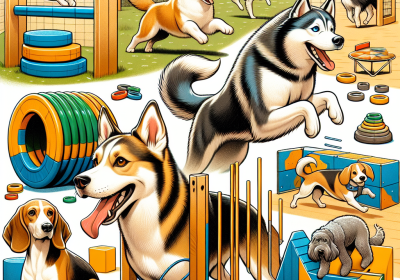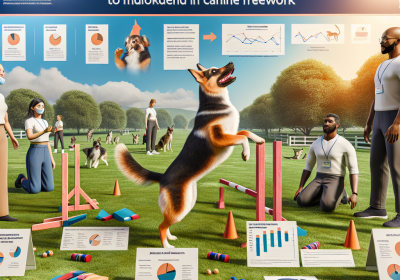Managing Injuries and Fatigue in Canine Freework
Table of Contents
- Recognizing Early Signs of Injury in Canine Freework
- How Canine Freework Enhances Mental Stimulation In Dogs
- Combining Canine Freework with Fetch and Play Sessions
Managing injuries and fatigue in canine freework is crucial for maintaining the health and performance of working dogs. Canine freework, which involves activities such as agility, obedience, and other physically demanding tasks, can put significant strain on a dog’s body. Effective management includes regular veterinary check-ups, proper conditioning, and tailored exercise regimens to prevent overexertion. Recognizing early signs of fatigue and injury, such as changes in gait, reluctance to perform tasks, or behavioral changes, is essential. Implementing rest periods, providing appropriate nutrition, and using supportive gear can also help mitigate risks. By prioritizing these strategies, handlers can ensure their dogs remain healthy, happy, and capable of performing at their best.
Benefits Of Canine Freework For Your Dog’s Physical Health
Canine freework, an innovative approach to dog exercise, offers a multitude of benefits for your dog’s physical health. This method, which emphasizes natural movement and exploration, allows dogs to engage in activities that are both mentally stimulating and physically beneficial. By incorporating a variety of surfaces, obstacles, and scents, canine freework provides a holistic exercise regimen that caters to the innate behaviors and needs of dogs.
One of the primary advantages of canine freework is its ability to enhance muscle development and coordination. Unlike traditional forms of exercise that may focus on repetitive motions, freework encourages dogs to navigate diverse environments. This variety in movement helps to engage different muscle groups, promoting balanced muscle development. For instance, when a dog climbs over uneven terrain or maneuvers through a series of obstacles, it must use its core muscles for stability and its limbs for propulsion. This comprehensive workout can lead to improved overall strength and agility.
In addition to muscle development, canine freework is beneficial for joint health. The varied movements involved in freework can help to maintain joint flexibility and reduce the risk of stiffness. This is particularly important for older dogs or those with pre-existing joint conditions. By allowing dogs to move at their own pace and choose their own paths, freework minimizes the risk of overexertion and injury. Furthermore, the low-impact nature of many freework activities makes it a suitable exercise option for dogs recovering from surgery or injury.
Another significant benefit of canine freework is its positive impact on cardiovascular health. Engaging in freework activities can elevate a dog’s heart rate, promoting cardiovascular fitness. Regular cardiovascular exercise is essential for maintaining a healthy weight, reducing the risk of heart disease, and improving overall endurance. The dynamic and engaging nature of freework ensures that dogs remain motivated and enthusiastic about their exercise routine, which can lead to more consistent participation and better long-term health outcomes.
Moreover, canine freework can aid in weight management. Obesity is a common issue among domestic dogs, leading to a host of health problems such as diabetes, arthritis, and decreased lifespan. By providing a stimulating and enjoyable form of exercise, freework encourages dogs to be more active, helping to burn calories and maintain a healthy weight. The varied and unpredictable nature of freework also prevents boredom, which can be a significant barrier to regular exercise in dogs.
In addition to the physical benefits, canine freework also offers mental stimulation, which indirectly supports physical health. Mental engagement can reduce stress and anxiety, leading to a more relaxed and content dog. A dog that is mentally stimulated is less likely to engage in destructive behaviors, which can sometimes result in physical harm. The mental and physical aspects of freework are intertwined, creating a comprehensive approach to canine health.
In conclusion, canine freework is a multifaceted exercise method that offers numerous benefits for your dog’s physical health. By promoting muscle development, joint flexibility, cardiovascular fitness, and weight management, freework provides a well-rounded exercise regimen. Additionally, the mental stimulation associated with freework contributes to overall well-being, making it an excellent choice for dog owners seeking to enhance their pet’s health and happiness. Through the natural and engaging activities of canine freework, dogs can enjoy a healthier, more active lifestyle.
How Canine Freework Enhances Mental Stimulation In Dogs

Canine freework, an innovative approach to dog training and enrichment, has gained popularity for its ability to enhance mental stimulation in dogs. This method involves allowing dogs to explore and interact with their environment freely, using their natural instincts and senses. While the benefits of canine freework are numerous, it is essential to address the potential risks associated with injuries and fatigue to ensure a safe and productive experience for our canine companions.
To begin with, canine freework offers a unique opportunity for dogs to engage in activities that stimulate their minds. By allowing dogs to explore various textures, scents, and objects, they can exercise their cognitive abilities and problem-solving skills. This mental stimulation is crucial for their overall well-being, as it helps prevent boredom and reduces the likelihood of developing behavioral issues. However, it is important to recognize that the physical demands of freework can sometimes lead to injuries if not managed properly.
One of the primary concerns in canine freework is the risk of physical injuries. Dogs, especially those with high energy levels, may become overly enthusiastic during freework sessions, leading to accidents such as sprains, strains, or cuts. To mitigate these risks, it is essential to create a safe environment for freework activities. This includes removing any hazardous objects, ensuring the area is free of sharp edges, and supervising the dog at all times. Additionally, it is advisable to start with short sessions and gradually increase the duration and complexity of the activities as the dog becomes more accustomed to the freework routine.
In addition to physical injuries, fatigue is another factor that requires careful management in canine freework. Dogs, like humans, can experience fatigue when they engage in prolonged or intense physical activities. Signs of fatigue in dogs may include excessive panting, drooping ears, and a decrease in enthusiasm for the activity. To prevent fatigue, it is crucial to monitor the dog’s energy levels and provide adequate rest periods during freework sessions. This not only helps prevent exhaustion but also ensures that the dog remains engaged and motivated throughout the activity.
Moreover, it is important to consider the individual needs and limitations of each dog when planning freework activities. Factors such as age, breed, and overall health can influence a dog’s ability to participate in certain activities. For instance, older dogs or those with pre-existing health conditions may require gentler and less strenuous activities compared to younger, more active dogs. Consulting with a veterinarian before starting a freework routine can provide valuable insights into the most suitable activities for a specific dog, ensuring their safety and well-being.
Furthermore, incorporating a variety of activities in canine freework can help prevent both physical and mental fatigue. By rotating different types of exercises and challenges, dogs are less likely to become bored or overexerted. This variety also keeps the freework sessions engaging and stimulating, promoting a positive experience for the dog.
In conclusion, while canine freework is an excellent way to enhance mental stimulation in dogs, it is essential to manage the risks of injuries and fatigue effectively. By creating a safe environment, monitoring the dog’s energy levels, and considering individual needs, we can ensure that our canine companions enjoy the full benefits of freework without compromising their health and well-being. Through careful planning and supervision, canine freework can be a rewarding and enriching experience for both dogs and their owners.
Enhancing Agility Training with Canine Freework
Combining Canine Freework with other forms of exercise can significantly enhance agility training, providing a holistic approach to a dog’s physical and mental well-being. Canine Freework, a concept that emphasizes allowing dogs to explore their environment freely, can be seamlessly integrated with structured agility exercises to create a more enriching and effective training regimen. This integration not only improves a dog’s agility skills but also fosters a deeper bond between the dog and its handler.
To begin with, Canine Freework encourages dogs to use their natural instincts and curiosity to navigate various environments. This form of exercise allows dogs to engage their senses, build confidence, and develop problem-solving skills. When combined with agility training, which focuses on precision, speed, and coordination, the benefits are manifold. For instance, a dog that is accustomed to exploring different textures, surfaces, and obstacles through Freework will likely approach agility courses with greater enthusiasm and adaptability. This adaptability is crucial in agility training, where dogs must quickly and efficiently maneuver through a series of obstacles.
Moreover, incorporating Canine Freework into agility training sessions can help prevent the monotony that sometimes accompanies repetitive drills. By allowing dogs to explore and interact with their surroundings in a less structured manner, handlers can keep training sessions engaging and stimulating. This variety not only maintains the dog’s interest but also reduces the risk of burnout, ensuring that the dog remains motivated and eager to learn. Transitioning between Freework and agility exercises can be done seamlessly, with Freework serving as a warm-up or cool-down activity that complements the more intense agility drills.
In addition to enhancing physical agility, Canine Freework also contributes to a dog’s mental agility. The problem-solving and decision-making skills developed during Freework can translate to better performance in agility courses. For example, a dog that has learned to navigate unfamiliar environments independently will be better equipped to handle unexpected challenges during an agility competition. This mental resilience is a key component of successful agility training, as it enables dogs to remain focused and composed under pressure.
Furthermore, the integration of Canine Freework with agility training can strengthen the bond between the dog and its handler. Freework encourages a more collaborative and communicative relationship, as handlers must observe and respond to their dog’s natural behaviors and preferences. This mutual understanding can enhance the effectiveness of agility training, as handlers can tailor their approach to suit their dog’s unique needs and strengths. By fostering a deeper connection, handlers can build a foundation of trust and cooperation that is essential for success in agility competitions.
In conclusion, combining Canine Freework with other forms of exercise, particularly agility training, offers a comprehensive approach to a dog’s development. The sensory engagement, mental stimulation, and physical conditioning provided by Freework complement the structured, skill-focused nature of agility training. This integration not only enhances a dog’s agility performance but also promotes overall well-being and strengthens the bond between dog and handler. By embracing the principles of Canine Freework, handlers can create a more dynamic and effective training regimen that prepares their dogs for the challenges of agility competitions while ensuring their holistic development.
Integrating Canine Freework into Obedience Routines
Integrating Canine Freework into obedience routines can significantly enhance the overall well-being and training efficacy for dogs. Canine Freework, a concept that emphasizes allowing dogs to move freely and engage with their environment, offers a unique approach to exercise that complements traditional obedience training. By incorporating Freework into structured routines, dog owners and trainers can create a more holistic training regimen that addresses both physical and mental stimulation.
To begin with, Canine Freework provides an excellent opportunity for dogs to explore their surroundings in a controlled yet liberating manner. This form of exercise encourages natural behaviors such as sniffing, foraging, and problem-solving, which are often restricted in conventional obedience training. By integrating Freework into obedience routines, dogs can experience a balanced mix of structured commands and free exploration. This balance is crucial for maintaining a dog’s interest and motivation, as it prevents the monotony that can sometimes accompany repetitive training exercises.
Moreover, Canine Freework can serve as a valuable tool for reinforcing obedience commands in a real-world context. For instance, while a dog is engaged in Freework, trainers can intermittently introduce obedience cues such as “sit,” “stay,” or “come.” This practice not only reinforces the dog’s understanding of these commands but also tests their ability to respond amidst distractions. Consequently, dogs learn to generalize obedience behaviors across different environments, making them more reliable and adaptable in various situations.
In addition to enhancing obedience training, Canine Freework also contributes to a dog’s emotional well-being. Allowing dogs the freedom to make choices and engage in self-directed activities can significantly reduce stress and anxiety. This aspect is particularly beneficial for dogs that may exhibit nervous or reactive behaviors. By incorporating periods of Freework into their training routines, these dogs can build confidence and develop a more positive association with their training sessions. Over time, this can lead to improved focus and cooperation during structured exercises.
Furthermore, Canine Freework can be tailored to suit the individual needs and preferences of each dog. For example, some dogs may thrive on activities that involve scent work, while others may prefer physical challenges such as climbing or balancing. By observing and understanding a dog’s natural inclinations, trainers can design Freework sessions that are both enjoyable and beneficial. This personalized approach not only enhances the dog’s physical fitness but also fosters a deeper bond between the dog and the trainer.
Transitioning from Freework to structured obedience exercises can be seamlessly achieved through the use of clear and consistent cues. For instance, trainers can establish a specific signal that indicates the end of Freework and the beginning of obedience training. This signal helps dogs understand the shift in expectations and prepares them to transition smoothly between different activities. Over time, dogs learn to anticipate and respond to these cues, resulting in a more cohesive and effective training routine.
In conclusion, integrating Canine Freework into obedience routines offers a multifaceted approach to dog training that addresses both physical and mental stimulation. By allowing dogs the freedom to explore and engage with their environment, trainers can create a more balanced and enjoyable training experience. This integration not only reinforces obedience commands in real-world contexts but also contributes to a dog’s emotional well-being. Through personalized Freework sessions and clear transitional cues, trainers can enhance the overall effectiveness of their training programs, ultimately leading to happier and more well-rounded dogs.
Combining Canine Freework with Fetch and Play Sessions
Combining Canine Freework with fetch and play sessions can be an excellent way to enhance your dog’s physical and mental well-being. However, it is crucial to manage injuries and fatigue effectively to ensure that these activities remain beneficial rather than detrimental. Understanding the balance between exercise and rest is key to maintaining your dog’s health and preventing overexertion.
To begin with, it is important to recognize the signs of fatigue in your dog. Dogs, much like humans, can experience tiredness and muscle strain after vigorous activities. Symptoms such as excessive panting, reluctance to continue playing, or a noticeable decrease in enthusiasm can indicate that your dog needs a break. By paying close attention to these signs, you can prevent overexertion and reduce the risk of injury.
Incorporating rest periods into your dog’s routine is essential. After a session of fetch or play, allow your dog some time to recover. This can be achieved by providing a quiet space where your dog can relax and hydrate. Additionally, alternating between high-energy activities and more relaxed forms of exercise, such as gentle walks or freework, can help maintain a balanced routine. Freework, which involves allowing your dog to explore and engage with their environment at their own pace, can be particularly beneficial in this regard. It provides mental stimulation without the physical demands of more intense activities.
Moreover, it is vital to consider the surface on which your dog is playing. Hard surfaces, such as concrete, can be harsh on your dog’s joints and paws, increasing the risk of injury. Opting for softer surfaces, like grass or sand, can help mitigate this risk. Additionally, ensuring that the play area is free from hazards, such as sharp objects or uneven terrain, can further protect your dog from potential injuries.
Another important aspect of managing injuries and fatigue is proper warm-up and cool-down routines. Before engaging in fetch or play sessions, take a few minutes to warm up your dog’s muscles. This can be done through gentle exercises, such as walking or light jogging. Similarly, after the session, a cool-down period involving slower-paced activities can help prevent muscle stiffness and soreness.
Nutrition also plays a significant role in your dog’s ability to recover from physical activity. Providing a balanced diet that meets your dog’s nutritional needs can support muscle repair and overall health. Additionally, ensuring that your dog stays hydrated is crucial, especially during and after exercise. Always have fresh water available and encourage your dog to drink regularly.
In the event that your dog does sustain an injury, it is important to seek veterinary advice promptly. Early intervention can prevent minor injuries from becoming more serious issues. Your veterinarian can provide guidance on appropriate treatments and recovery plans tailored to your dog’s specific needs.
In conclusion, while combining canine freework with fetch and play sessions can offer numerous benefits, it is essential to manage injuries and fatigue effectively. By recognizing the signs of fatigue, incorporating rest periods, choosing appropriate play surfaces, implementing warm-up and cool-down routines, and ensuring proper nutrition and hydration, you can help maintain your dog’s health and well-being. Through careful management, you can ensure that these activities remain a positive and enriching part of your dog’s life.
Read more about Canine Freework
Canine Freework and Physical Exercise
– The Physical Demands of Canine Freework
– Canine Freework as a Form of Exercise for Dogs
– How to Safely Increase Physical Demands in Canine Freework
– Combining Canine Freework with Other Forms of Exercise
– Managing Injuries and Fatigue in Canine Freework


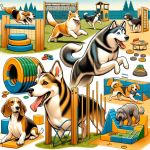

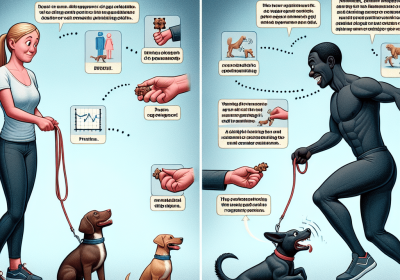
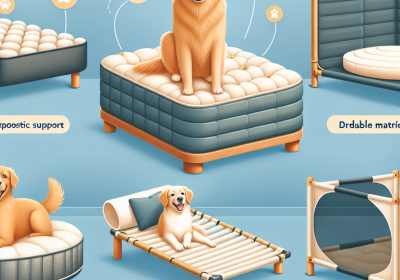
![The Dog Podcast Uncovers Startling Truths About What We Feed Our Dogs [Press Release]](https://narrativenest.com.au/wp-content/uploads/2024/08/canine-nutritious-food-400x280.jpg)
